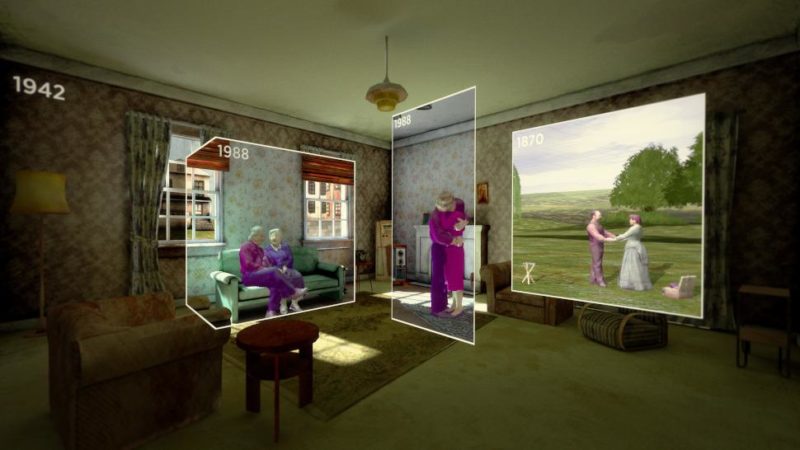The first chapter of veteran director and stage manager Scott Faris’ latest project, HERE, received its premiere at the Venice 2020 Film Festival this month. Faris, the inaugural holder of the Alice M. Pollitt Professorship in Stage Management at the School of Dramatic Arts, directed and staged the live performances of the immersive collaboration of virtual reality and performance.
HERE, adapted from Richard McGuire’s groundbreaking graphic novel, is a unique experience in which the main character is a place rather than a person. Audiences are invited to join the many characters throughout time who have called one particular room “home” and witness the reverberations of human interactions that ripple through time.
The film was shot over three days last December at the Intel Studio Stage in Manhattan Beach, with The Mandalorian filming on a soundstage next door for Disney+. The state-of-the-art technology utilized in filming was volumetric capture, which converts a person, object, or place into 3D digital data and then reproduces it as a high-quality image. This free-viewpoint video technology allows creators to capture an entire world that can be seen from any viewpoint.
“It was a challenge to maintain the storytelling because none of what you see around the actors exists while you’re shooting,” said Faris.
Normally, green-screen work would be captured in front of a backing screen. The Intel stage is one big, circular green-screen with 100 fixed cameras that film 360 degrees around the performers.
“Scenery gets added digitally in post-production, otherwise you would block the cameras from capturing the actors” continued Faris. “I staged and directed the scenes in a studio, using only props and some chairs. Once we got on stage, all furniture props were merely frames that an actor could sit on but nothing more. The props also had to be either pink or green so they would disappear and could be animated on top of in post-production.”
Up until this project, Intel (who were producers of the piece) had only filmed non-narrative, visual sequences. HERE was the first time anyone attempted a narrative story using volumetric technology.
The adaptation was the brainchild of Lysander Ashton of 59 Productions, the award-winning design company behind An American in Paris. Faris had previously collaborated with 59 Productions on several works, including PBS’ Light Falls, starring the theoretical physicist and Columbia University Professor, Brian Greene.
